
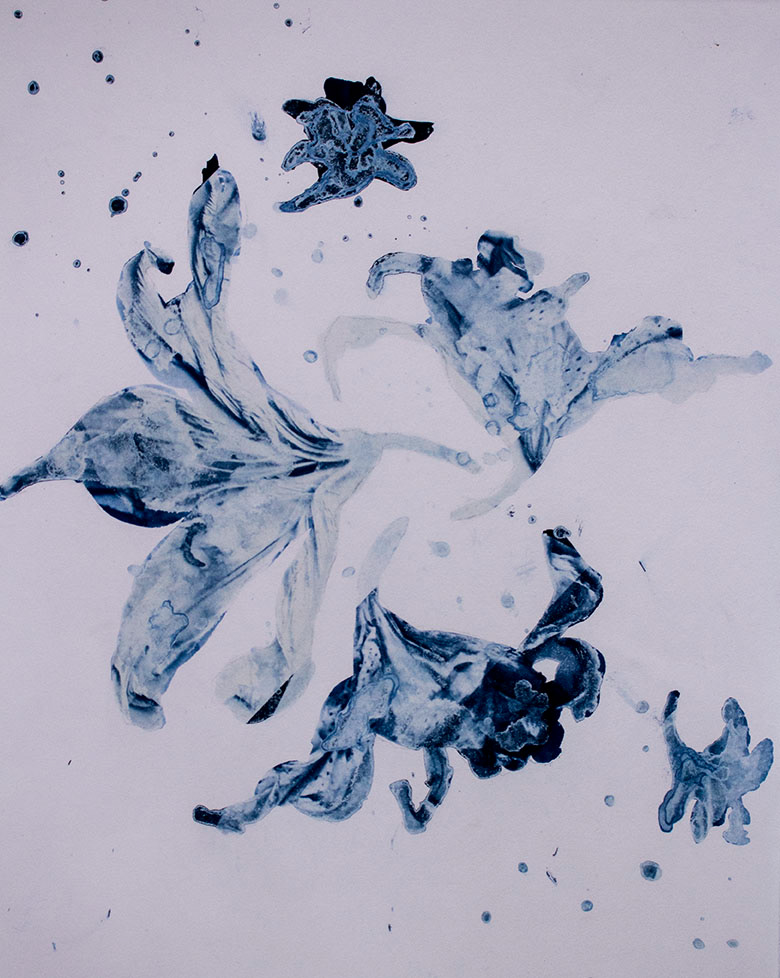
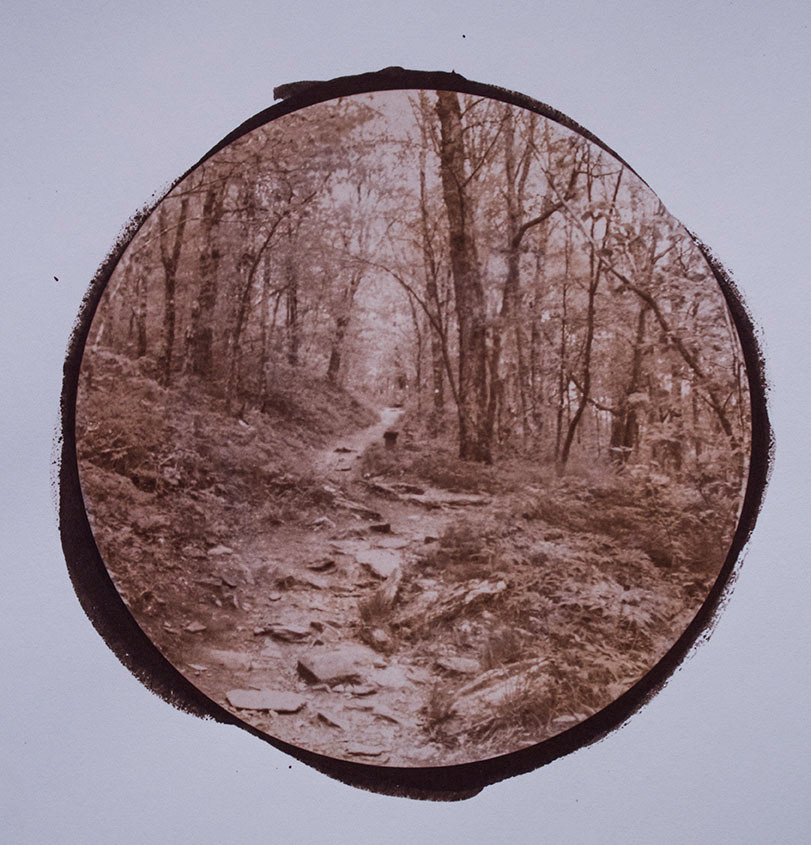
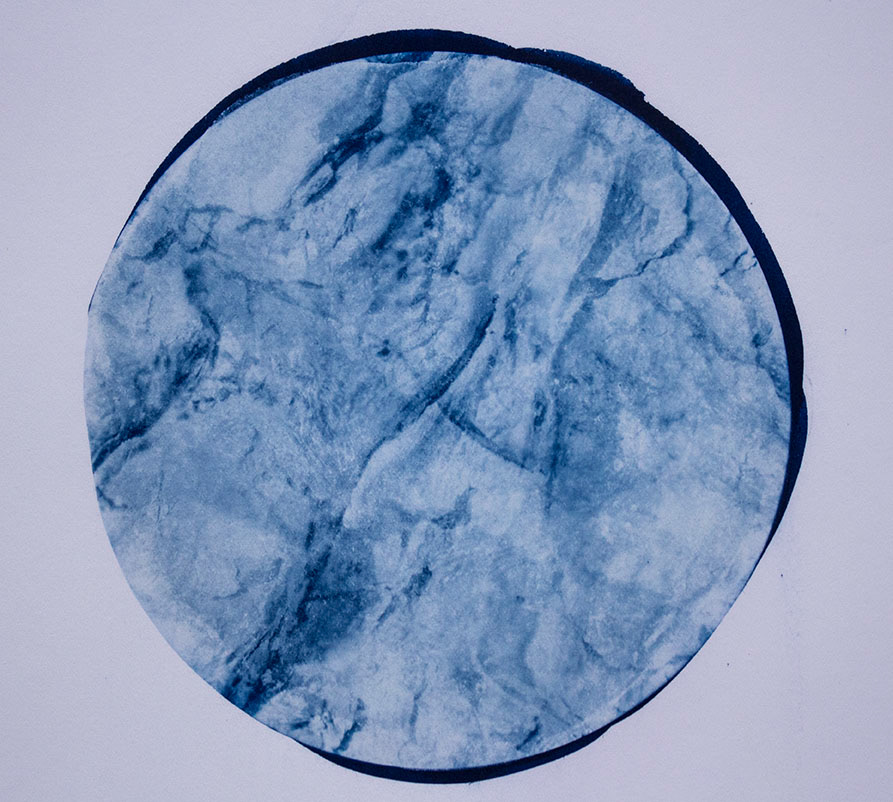
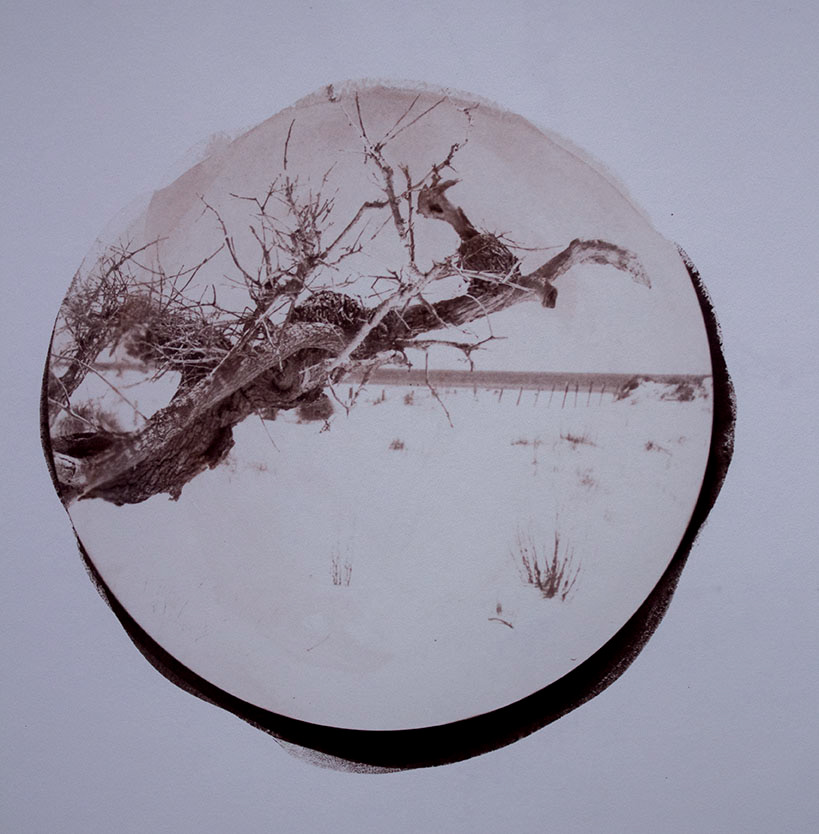


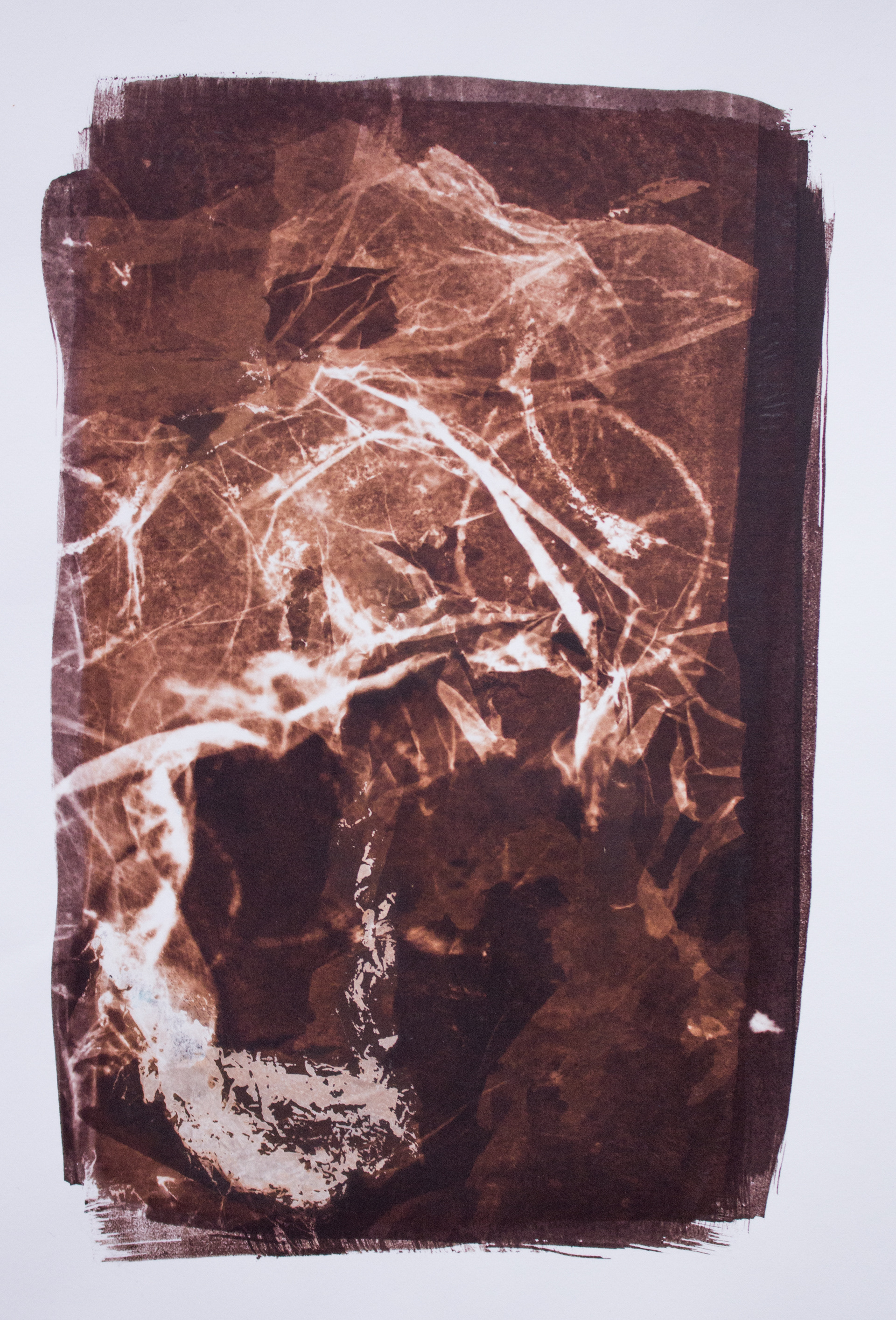


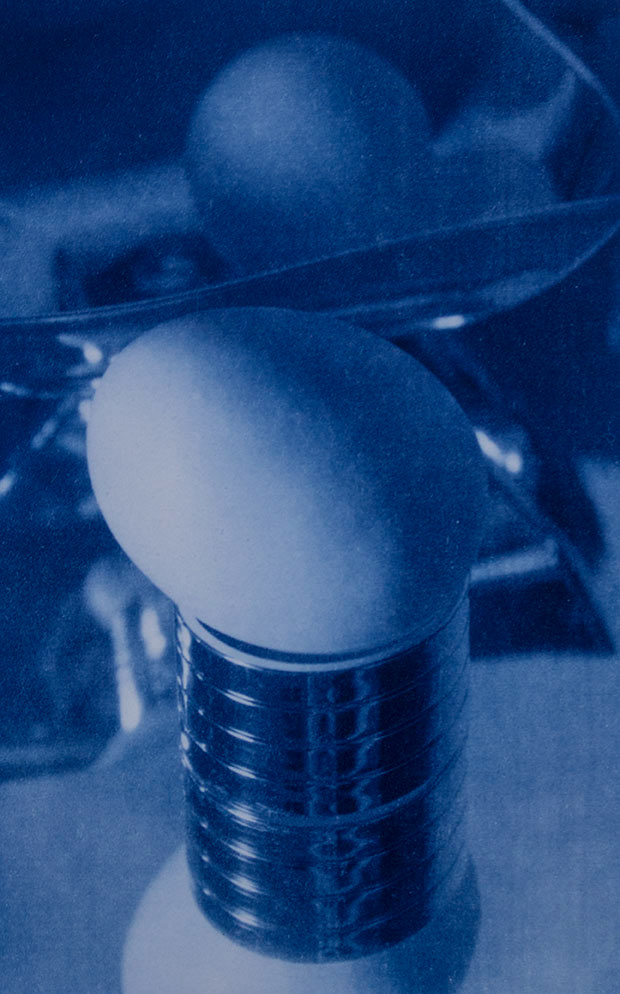
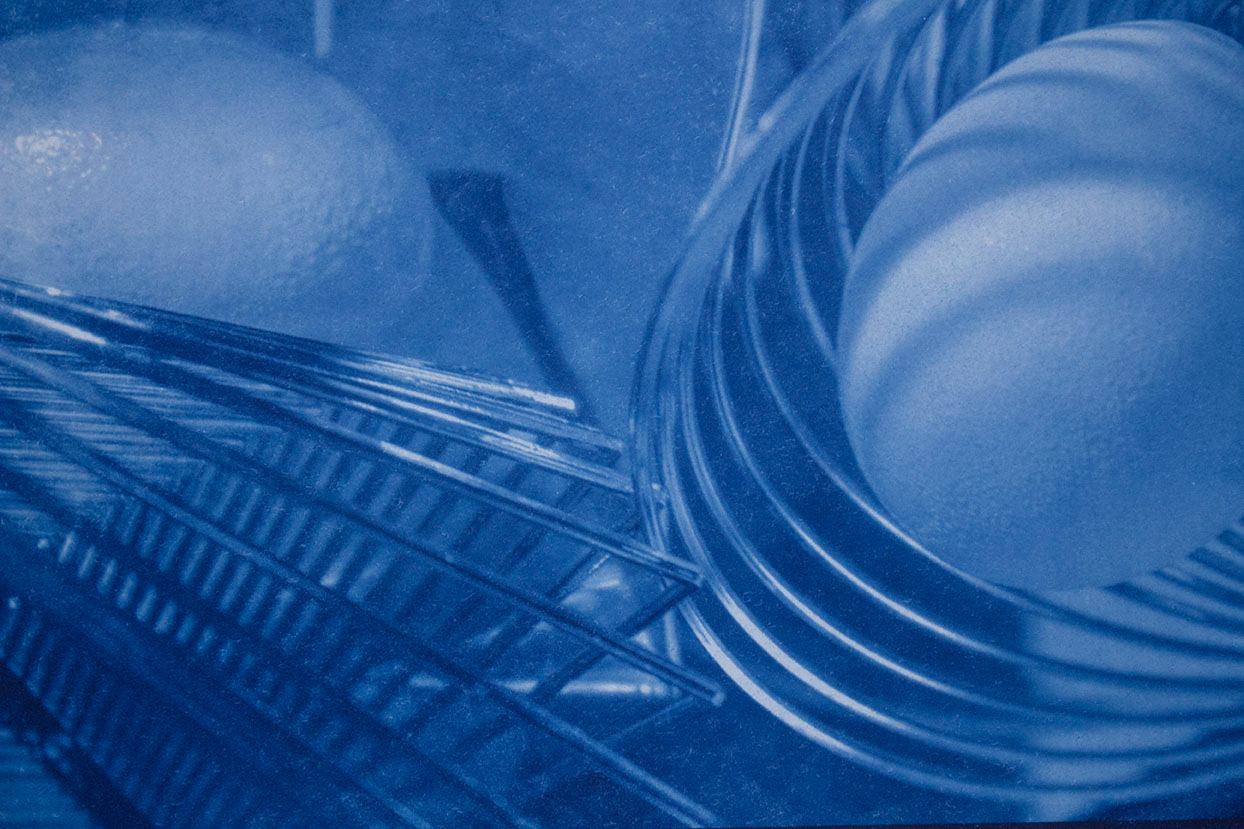


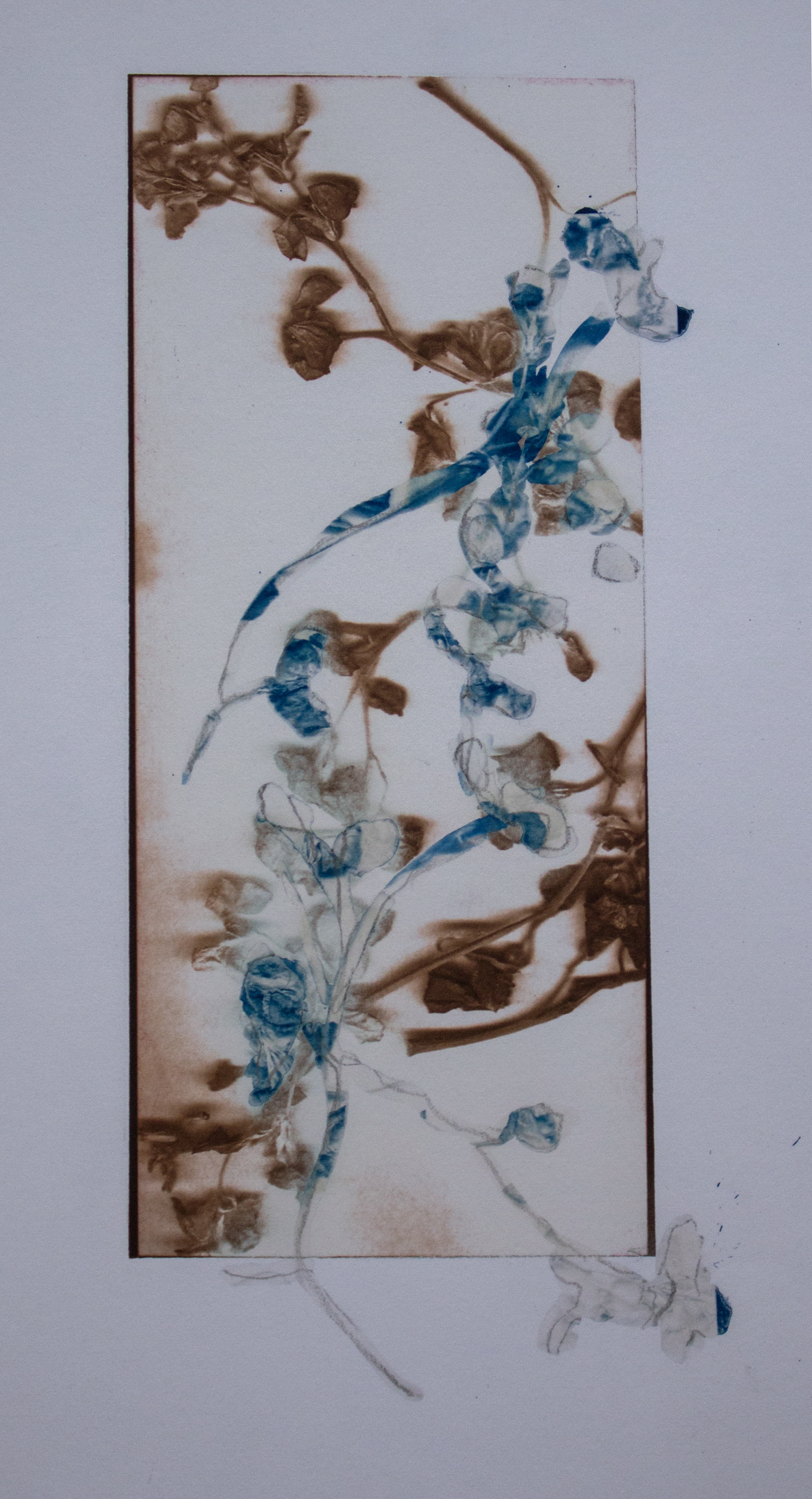
Cyanotype printing was discovered around 1842. In the 1860s it become popular commercially because it was cheaper than the traditional darkroom method of printing. It has become popular among photographer’s eager to experiment with alternative processes. The traditional cyanotype is made with Ferric Ammonium Citrate and Potassium Ferricyanide. The sensitizer is applied to paper, dried, and exposed to UV light in contact with a digital negative. After it is exposed, the print is washed in water to remove the unexposed iron salts and while it dries is oxidizes and become a deep blue color. The albumen print was invented in 1850 and became the dominant printing process for almost fifty years. Paper is coated with an emulsion containing egg white (albumen) and salt (sodium chloride). The general tone is yellowish, with cream colored highlights and deep chocolate brown shadows. Immersion in a bath of silver nitrate makes the paper light sensitive. The negative is directly exposed and a bath of sodium thiosulfate fixes the image and prevents further darkening. There are further techniques to then tone the image and prevent fading.














